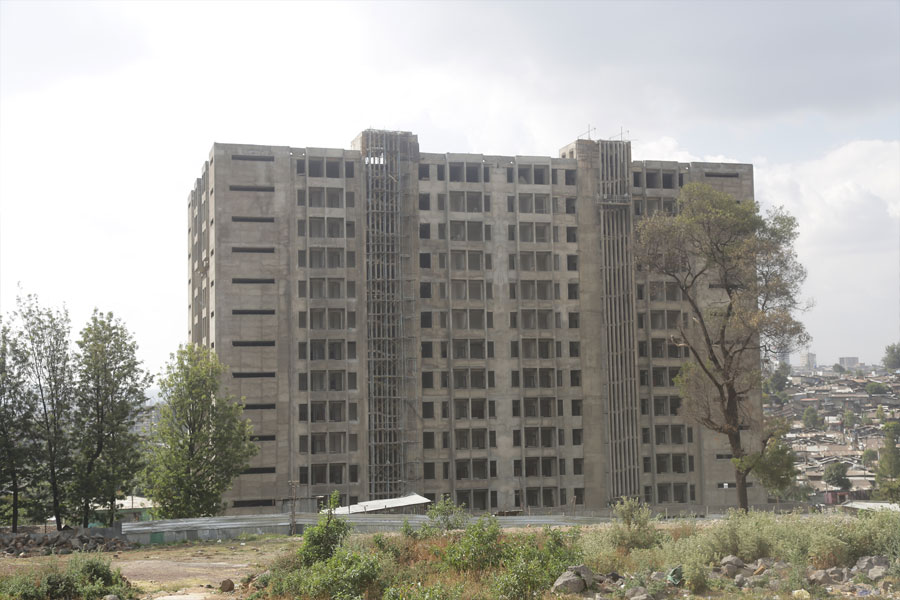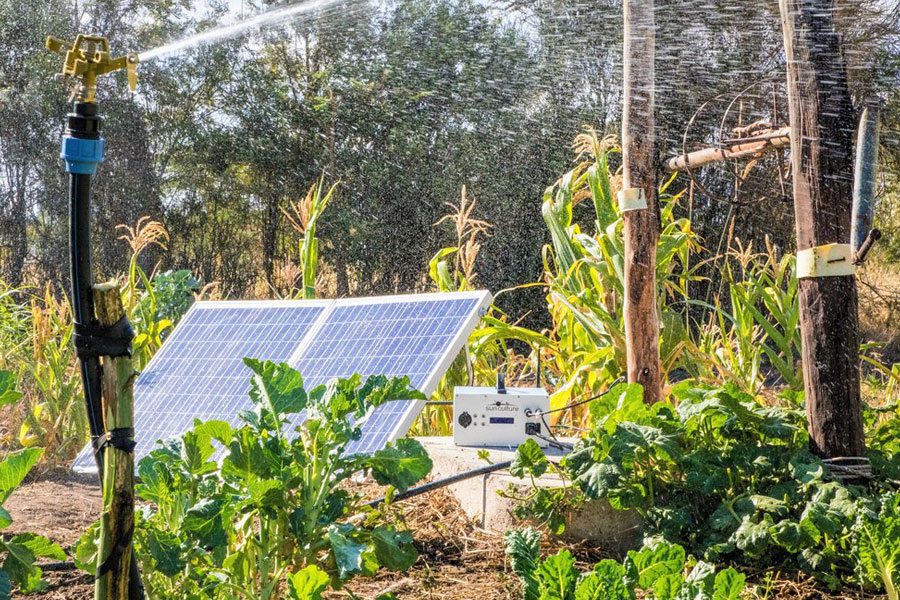
Radar | Jan 21,2023
Federal officials inch closer to securing 180 million dollars in funding from the World Bank to expand a welfare programme designed to bring refugees back to the workforce while in host countries. They hope to see the second phase, which will run for five years beginning July this year, reaching 2.5 million people, and around a quarter will come from refugees.
The initiative was launched five years ago with 100 million dollars in loans secured from the Bretton Woods institution. The federal government requested additional financing a year before the project's first phase was scheduled to come to a close in December last year. Officials from the Ministry of Finance and World Bank's country representatives discussed the proposal last week to expand the programme dubbed the "development response to displacement impacts."
“They've reached an agreement,” Nigatu Bogale, national project coordinator under the Ministry of Agriculture, told Fortune.
Officials had initially requested 130 million dollars in loans from the World Bank; however, the agreement changed to a grant arrangement with the understanding that the second phase would directly target refugees. The first phase targeted host communities, with a half-year extension ending next month. The extension was necessary to complete unfinished works in two weredas of the Somali Regional State, which had been interrupted due to security concerns, according to Nigatu.
“We're also hoping to resume work suspended in the Tigray Regional State," he said.
The Tigray Regional State hosted five large refugee camps where the project was frozen following the outbreak of armed conflict in November 2021. They are part of the 27 camps hosting 845,000 refugees and asylum seekers. The Benishangul-Gumuz regional state hosts the highest number, while refugees from South Sudan have the highest number comprising 46pc of the refugee population, according to the UNHCR.
Refugee shelters and camps are characterised by limited access to essential social services and infrastructure, weak institutional capacity, high unemployment rates and poverty. The presence of refugees puts strains on the already limited resources and opportunities available to host communities. A study conducted by the World Bank in 2017 revealed that confrontations, disputes and conflicts over resources are common between host communities and refugees. These altercations sometimes result in fatalities.
According to the study, conflicts are more frequent in the Gambella, Benishangul-Gumuz, and Somali regions. Two years ago, nine South Sudanese refugees were killed near Pugnido, one of the largest camps in Gambella. A camp hosting over 10,000 refugees in Tongo town, in Benishangul-Gumuz, was razed in January this year. The United Nations High Commissioner for Refugees (UNHCR) announced that 20,000 refugees in the regional state had been displaced due to instability.
Close to 70,000 refugees live in five camps in Benishangul-Gumuz Regional State. About 60 schools and two dozen health centres have been erected in these camps, financed by the World Bank. Farmers who cultivate 38hct of land in the region also benefited from agricultural machinery and two irrigation projects under the initiative, according to Negatu.
No less than 223 schools and 97 health centres were erected in 16 weredas in five regional states during the first phase. Close to 7,000 farmers who live within 20Km radius of the camps were provided agricultural equipment and small-scale irrigation projects. Around 1.2 million beneficiaries must cover five percent of costs under the programme, thus contributing 124 million Br.
Assefa Kasayie is a farmer in Bambasi wereda in Benishangul-Gumuz. He is one of the project's beneficiaries in the area.
Assefa observed that disputes between refugees and residents have simmered down ever since people in the region, mostly farmers, began to benefit from the programme. The impact of refugee camps goes well beyond the hosting wereda. Assefa told Fortune much of the quarrels rose in response to refugees chopping trees to sell the firewood as a means of income.
Nonetheless, he is happy with the progress.
A school constructed under the programme helped Assefa send his three children to attend classes located half an hour's walk from their homestead. The children previously had to travel for up to two hours each day. Assefa, who grows maise and red pepper on two hectares, has also gained from an irrigation project built near his village. It has allowed him to cultivate more than once a year and offer his produce to local markets rather than rely solely on subsistence farming as he did before.
Last year, he sold 10qtl of his crops.
Regional authorities in Gambella, where 104,000 refugees are sheltered in eight camps, have also noticed a cooling in tensions between hosts and refugees. Nearly 60 schools and 35 health centres have been built in Gambella.
“The situation is improving in recent years,” said Odola Kier, regional project coordinator.
Under the second phase, the federal government looks to expand the programme to 29 weredas in six regional states.
The Amhara Regional State, which has seen two refugee camps opened over the past year, is to join the list. Officials say expanding the project is crucial to deal with a swelling influx of refugees. Close to 70,000 entered Ethiopia over the last year. A growing tendency to stay for more extended periods has also put more pressure on host communities, according to Negatu.
The International Organisation for Migration (IOM) estimates that most refugees stay for over five years, while some remain for two decades.
PUBLISHED ON
May 14,2022 [ VOL
23 , NO
1150]

Radar | Jan 21,2023

Radar | Mar 05,2022

Fortune News | Dec 04,2022

Fortune News | Apr 03,2023

Radar | May 02,2020

Fortune News | Nov 27,2018

Radar | Apr 13,2019

Viewpoints | May 01,2020

Fortune News | Feb 14,2024

My Opinion | Dec 15,2024

Dec 22 , 2024 . By TIZITA SHEWAFERAW
Charged with transforming colossal state-owned enterprises into modern and competitiv...

Aug 18 , 2024 . By AKSAH ITALO
Although predictable Yonas Zerihun's job in the ride-hailing service is not immune to...

Jul 28 , 2024 . By TIZITA SHEWAFERAW
Unhabitual, perhaps too many, Samuel Gebreyohannes, 38, used to occasionally enjoy a couple of beers at breakfast. However, he recently swit...

Jul 13 , 2024 . By AKSAH ITALO
Investors who rely on tractors, trucks, and field vehicles for commuting, transporting commodities, and f...

Sep 13 , 2025
At its launch in Nairobi two years ago, the Africa Climate Summit was billed as the f...

Sep 6 , 2025
The dawn of a new year is more than a simple turning of the calendar. It is a moment...

Aug 30 , 2025
For Germans, Otto von Bismarck is first remembered as the architect of a unified nati...

Aug 23 , 2025
Banks have a new obsession. After decades chasing deposits and, more recently, digita...